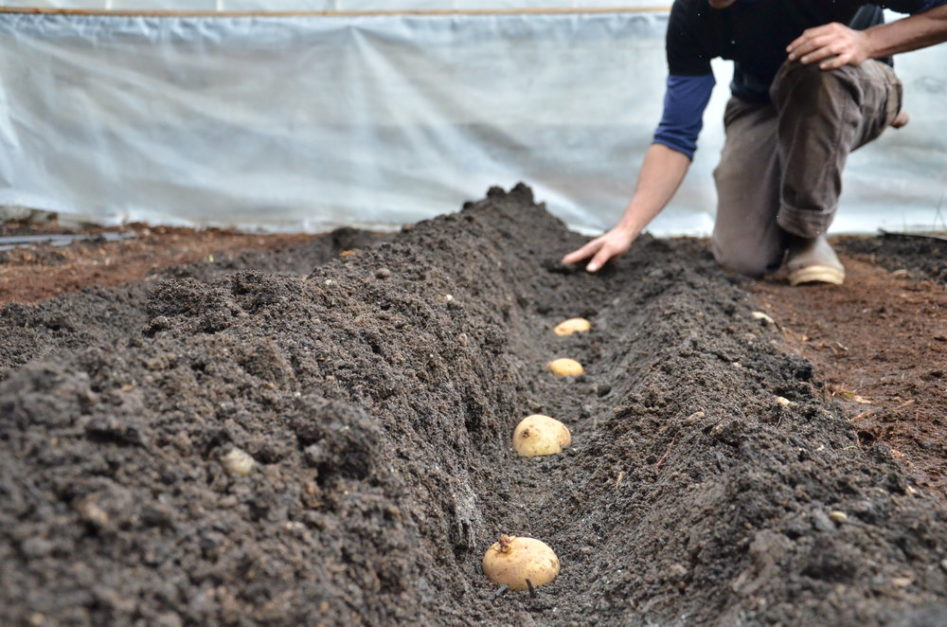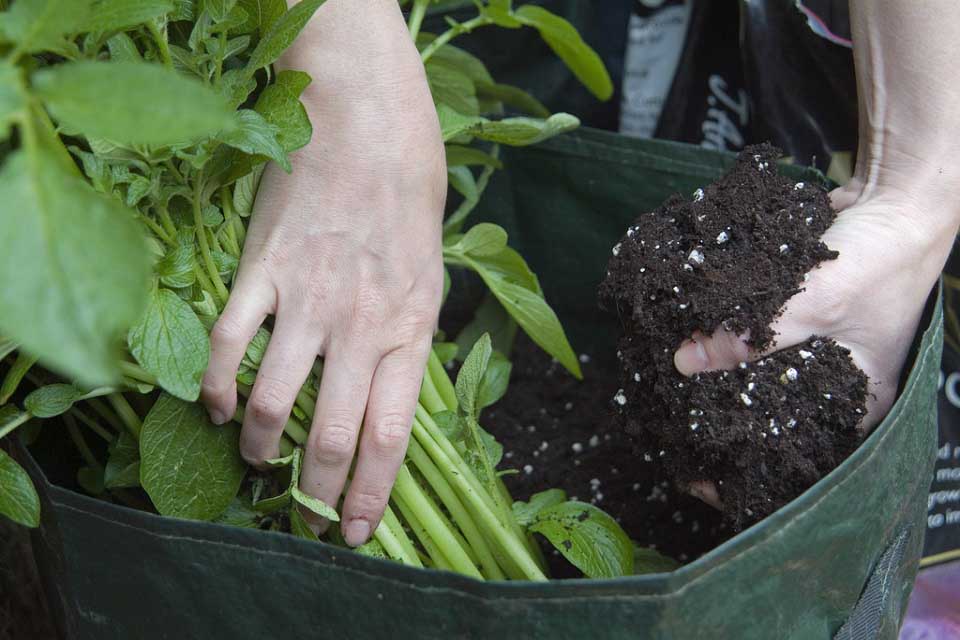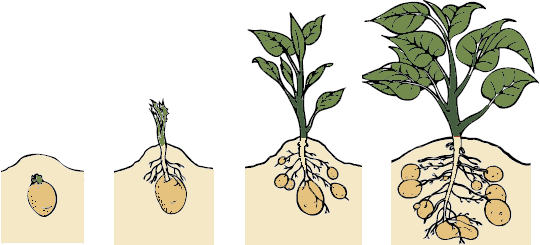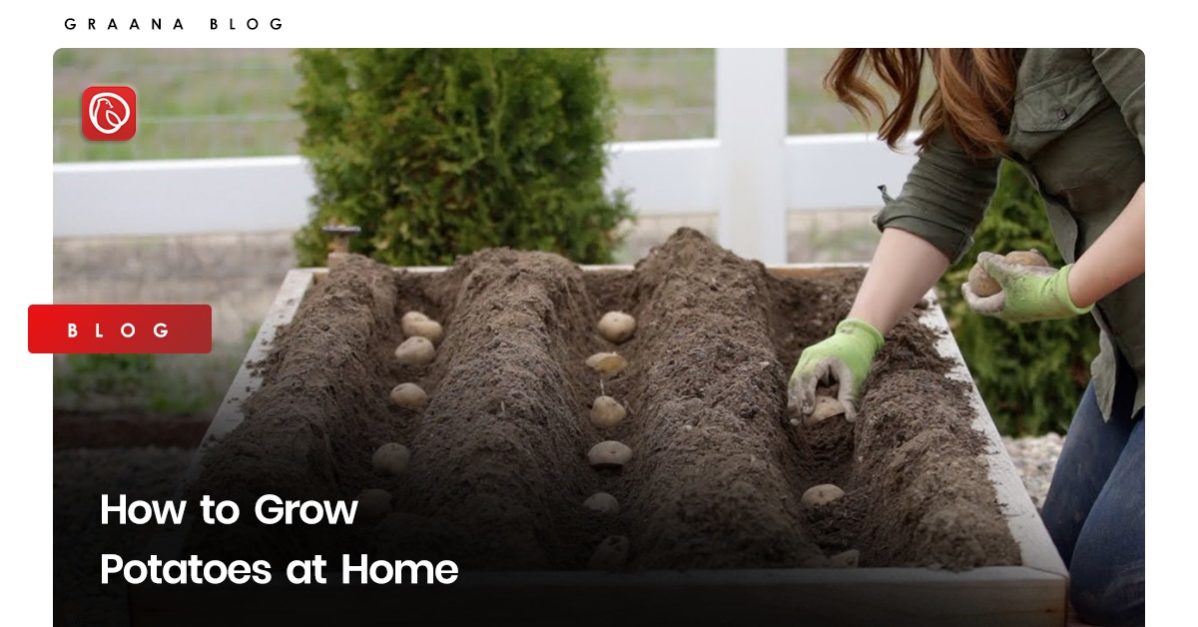Are you looking for the best plants and vegetables to grow in your home? Consider growing potatoes – a staple in many cuisines around the world.
They’re also relatively easy to grow and provide a healthy and nutritious food source for your family. Whether you have a small backyard or just a sunny windowsill, you can grow potatoes at home with just a few supplies and a little bit of patience.
Growing potatoes at home is an easy and rewarding process. Whether you have a small garden or just a balcony, potatoes can be grown in pots or containers, making them ideal for urban gardening.
Graana.com has prepared a step-by-step guide on how to grow potatoes at your home.
Materials Needed
- Seed potatoes
- Well-draining soil
- Compost or well-rotted manure (optional)
- Mulch
How to Plant Potatoes

To grow potatoes, start by purchasing seed potatoes from a nursery or online plant store. You can also use potatoes that have started to sprout, but this may not always be successful due to potential treatment to prevent sprouting or the presence of diseases.
Cut the potatoes into chunks with at least one or two eyes and let them cure for a couple of days in a warm and sunny area. Plant the chunks in loose, fertile soil that drains well.
Dig holes 4-6 inches deep and space them 10-12 inches apart, with the eyes facing up. Cover with 2-3 inches of soil and continue to add soil as the vines grow, reaching about 6-8 inches.
How to Plant Potatoes in a Container

The key factor in growing potatoes in containers is to use a large enough container. A container with a minimum depth of two feet is ideal, such as a 5-gallon or even 10-gallon bucket. Start by adding 4-6 inches of soil in the bottom of the container, then place the potato and cover it with another 2-3 inches of soil.
Continue to add soil as the plant grows and its shoots reach about 6-8 inches above the soil, to prevent exposure to air and potential bitterness. Note that potatoes grown in containers tend to be smaller and have a slightly lower yield.
When to Plant Potatoes

In Pakistan, potatoes are typically planted in the winter season, from November to December, when temperatures are cool and the soil is moist. This allows the potatoes to establish roots before the onset of hot weather.
In areas with milder climates, potatoes may also be planted in early spring. It’s important to consider local climate and soil conditions when planting potatoes to ensure optimal growth and a successful harvest.
Steps to Grow Potatoes at Your Home
Here are steps on how to grow potatoes at your house:
Choose your seeds
For best results, begin by obtaining organic and certified disease-free seed potatoes from a catalogue or farm store. Avoid using grocery store potatoes that have been treated with sprout inhibitors.
When buying from a farm store, choose seed potatoes that have already sprouted for an earlier harvest. If the seed potatoes have not sprouted, pre-sprout them by leaving them on a kitchen counter.
Separate the Eyes
Only small, golf ball-sized potatoes should be planted as a whole. Larger tubers should be cut into smaller pieces, each with two or three eyes. This is because large potatoes with multiple eyes will result in a crowded, multi-stemmed plant, leading to competition for resources and smaller potato yields.
Before planting, it is important to choose the right soil. Potatoes prefer well-drained, loose soil with a pH level of 5.5 to 6.5. It’s also a good idea to add compost or other organic matter to the soil to provide essential nutrients to the growing plants.
Prepare the soil
Potatoes need well-draining soil with a pH between 5.5 to 6.5. Potting soil is a good option for containers. If you are planting in the ground, add compost or well-rotted manure to improve soil quality. To grow potatoes in your garden, start by preparing the soil. Opt for a location that receives at least 6-7 hours of full sunlight.
The soil should be loose, airy, and well-drained to prevent rotting. Create a trench that is 8 inches deep and 6 inches wide, with rows spaced 3 feet apart. Fill the trench with organic compost and plant the seed potatoes. Make sure the soil has a low moisture content to ensure healthy growth.
How to Hill Potatoes
Potato plants grow a main stem with leaves and flowers above ground, which signals that secondary stems have formed underground to produce more tubers from the main stem.
To increase the yield of potatoes and protect them from sunlight, the soil should be hilled around the base of the stem 3-4 times in a season.
It’s best to hill in the morning, avoid doing it during the heat of the day, and maintain even moisture in the soil for the best growth. When the potato plants are flowering, hilling the potatoes will help to ensure a healthy harvest.
Water regularly
Potatoes need a steady supply of moisture. Water regularly and deeply, making sure the soil is evenly moist. Avoid letting the soil dry out completely, as this will cause the plants to wilt.
It is also important to note that too much water can be harmful to potato plants as it can lead to root rot. To prevent this, make sure the soil has proper drainage and that the plants are not standing in water. You can check the moisture level of the soil by sticking your finger about 2 inches deep into the soil.
If the soil feels moist, then there is no need to water. If it feels dry, it is time to water the plants. Additionally, mulching around the base of the plants can help to conserve moisture and control weeds. Overall, a careful balance of moisture is crucial for the health and growth of potato plants.
Mulch
Cover the soil with a layer of mulch to help retain moisture and suppress weeds. This will also prevent the potatoes from greening, which can make them poisonous. It is important to use an appropriate type of mulch for potato plants.
Organic mulches, such as straw, wood chips, or leaves, are best as they break down over time and add nutrients to the soil. Avoid using plastic mulch as it can retain too much heat and damage the roots of the potato plants. The depth of mulch should be about 2-3 inches deep and should be spread evenly around the base of the plants, taking care not to cover the stem or leaves.
Regularly check the mulch and add more if necessary. Mulching not only helps to conserve moisture and control weeds, but it also helps to regulate soil temperature, which can have a positive impact on the growth and overall health of potato plants.
Harvest
Potatoes are ready to harvest when the leaves start to yellow and die back. Carefully dig up the plant and gently shake off any soil, and store the potatoes in a cool, dark place.
After harvesting, allow the potatoes to dry in the sun for a few hours, but not too long as direct sunlight can cause the skin to become tough and hard to peel. When the potatoes are dry, remove any remaining dirt, cut off the stems, and brush away any loose skin.
Store the potatoes in a cool, dark, and well-ventilated place. Ideally, the temperature should be between 45-50°F and the relative humidity should be between 70-85%. Avoid storing potatoes near ethylene-producing fruits, such as apples and bananas, as this can cause the potatoes to sprout and become inedible.
How To Take Care of Growing Potatoes
To successfully grow potatoes at home, it’s crucial to avoid exposing the tubers to direct sunlight for extended periods, as this can cause them to turn green and become toxic. Hilling, a technique of mounding soil around the plant stems, is crucial in this regard.
To prevent pests and diseases, it’s important to take precautions before planting the seed potatoes. Ensure the soil has an acidic pH level of no more than 5.2 to avoid Potato Scab disease.
Dusting the seed potatoes with sulfur before planting can also help protect against pests like Colorado potato beetles, aphids, and fleas. In case of an infestation, a suitable pesticide can be used to eliminate these unwanted guests.
By following these steps, you can ensure that your potatoes will stay fresh and delicious for several months. Growing potatoes at home is a great way to enjoy fresh, delicious potatoes all season. With a little patience and care, you’ll be harvesting your own potatoes in no time!
if you want to know more about rooftop gardening ideas, follow Graana blog.




